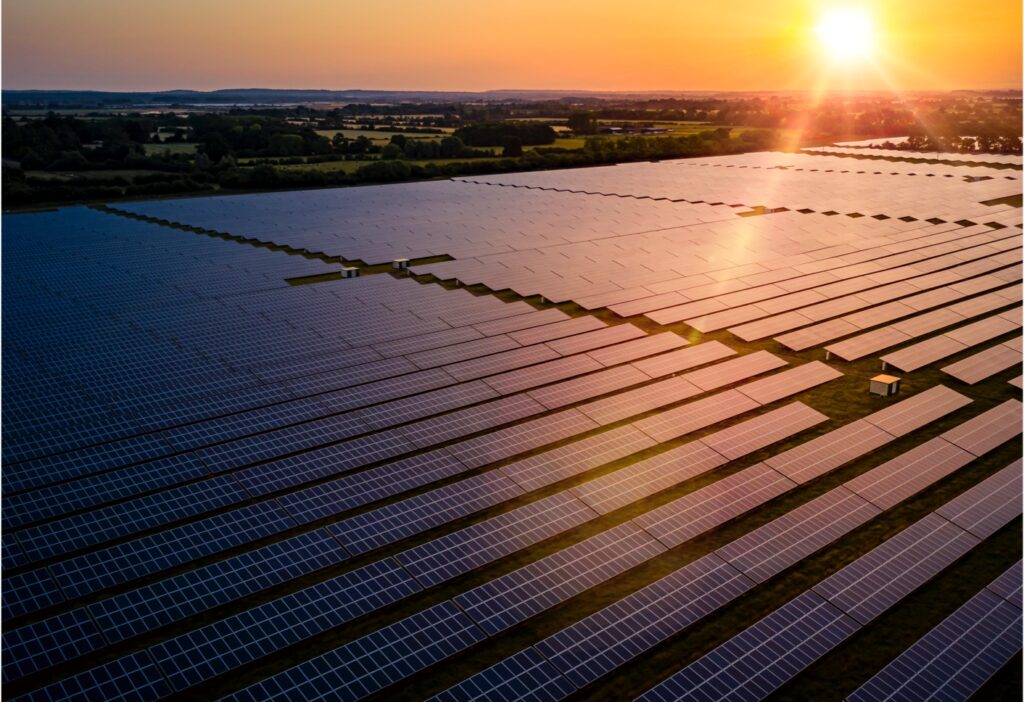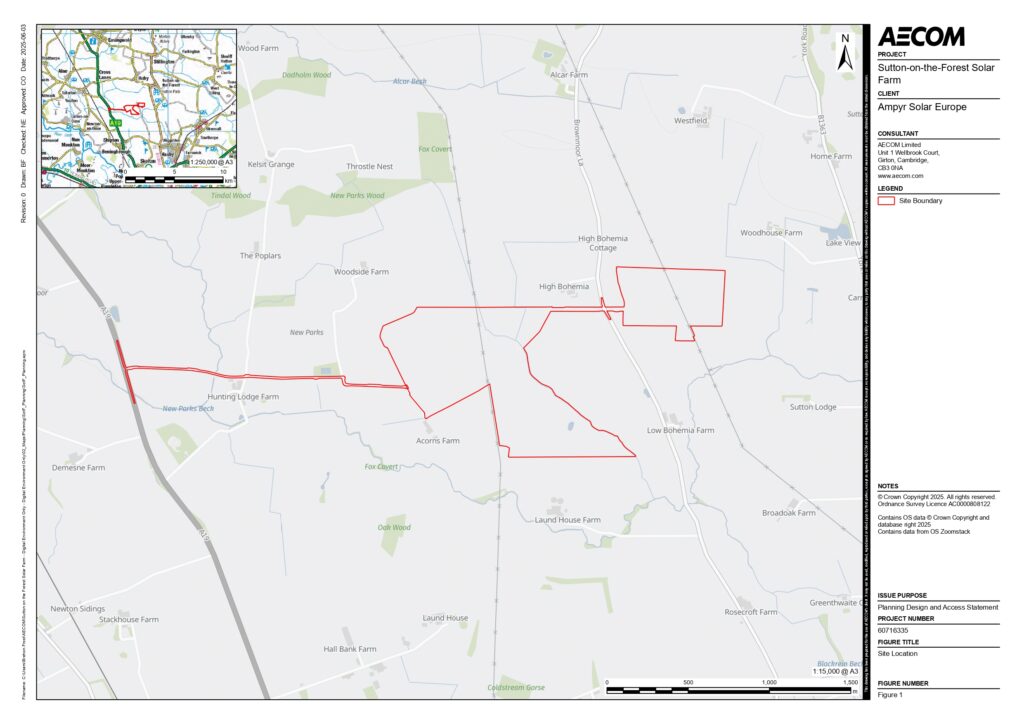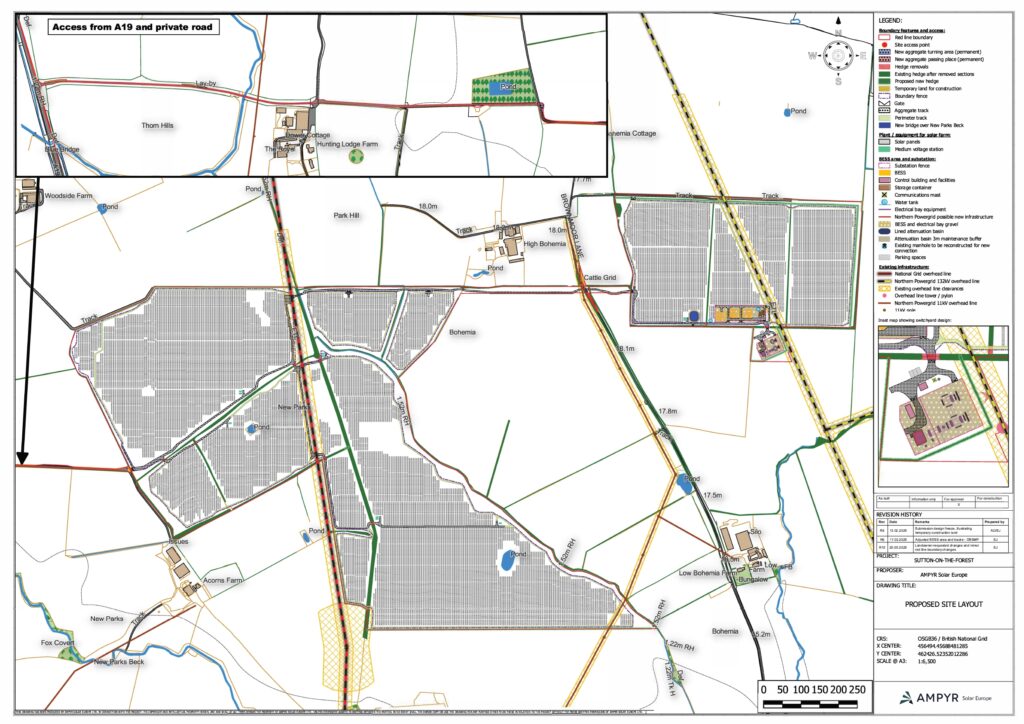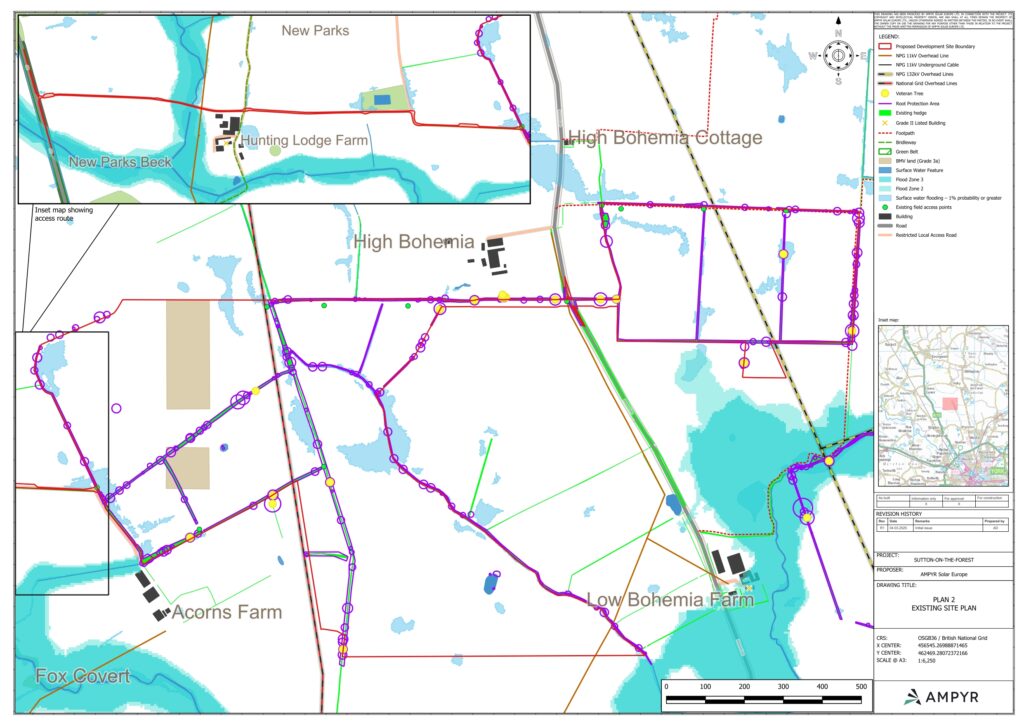Our proposals are for a new solar development capable of generating up to 49.9 megawatts (MW) of energy, with a battery storage system with capacity of up to 10MW. It would be located about 1.5 kilometres to the southwest of the village of Sutton-on-the-Forest, in North Yorkshire.
The solar farm will connect into the National Grid through underground cables and a single new above-ground pole adjacent to the existing 132kV overhead power line.
The solar development will consist of:
- Approximately 95 hectares of land.
- Solar panels with a power generation capacity of up to 49.9MW.
- Battery Energy Storage System (BESS) with a capacity of 10MW.
- Solar panels mounted on lightweight frames in rows spaced 2.5 m apart, with a minimum ground clearance of 0.8 m and a maximum panel height of 3 m. As tracker panels, which tilt the angle of solar panels throughout the day to continuously face the sun at the best angle, the height of the solar panels will vary from their midday point (1.83 m high) to their full height.
- Substation with a control room, storage units and electrical bay.
- Inverters and transformers to convert power from DC (Direct Current) to AC (Alternating Current).
- Site access and exit points via the A19 and private roads into New Parks Estate, connecting into the rest of the site mainly via existing field accesses.
- Post-and-wire stock-proof fencing around the site up to 2m in height.
- Underground cables and a single new above-ground pole adjacent to the existing power line.
- Maintenance of the Public Right of Way that borders the Site, with appropriate planting and mitigation.
- Approximately 1km of new hedgerow at the site boundary, as well as enhancement of existing hedgerows to screen the development from view and enhance biodiversity.
Hedgerows around the site would be maintained where possible to screen the development from external views and also provide biodiversity benefit. Where there are existing gaps in the hedgerow, additional infill planting with native hedgerow species would be considered to improve screening and enhance biodiversity.
Plans 1 and 2 show the Sutton-on-the-Forest Solar Farm site location and the proposed layout.





